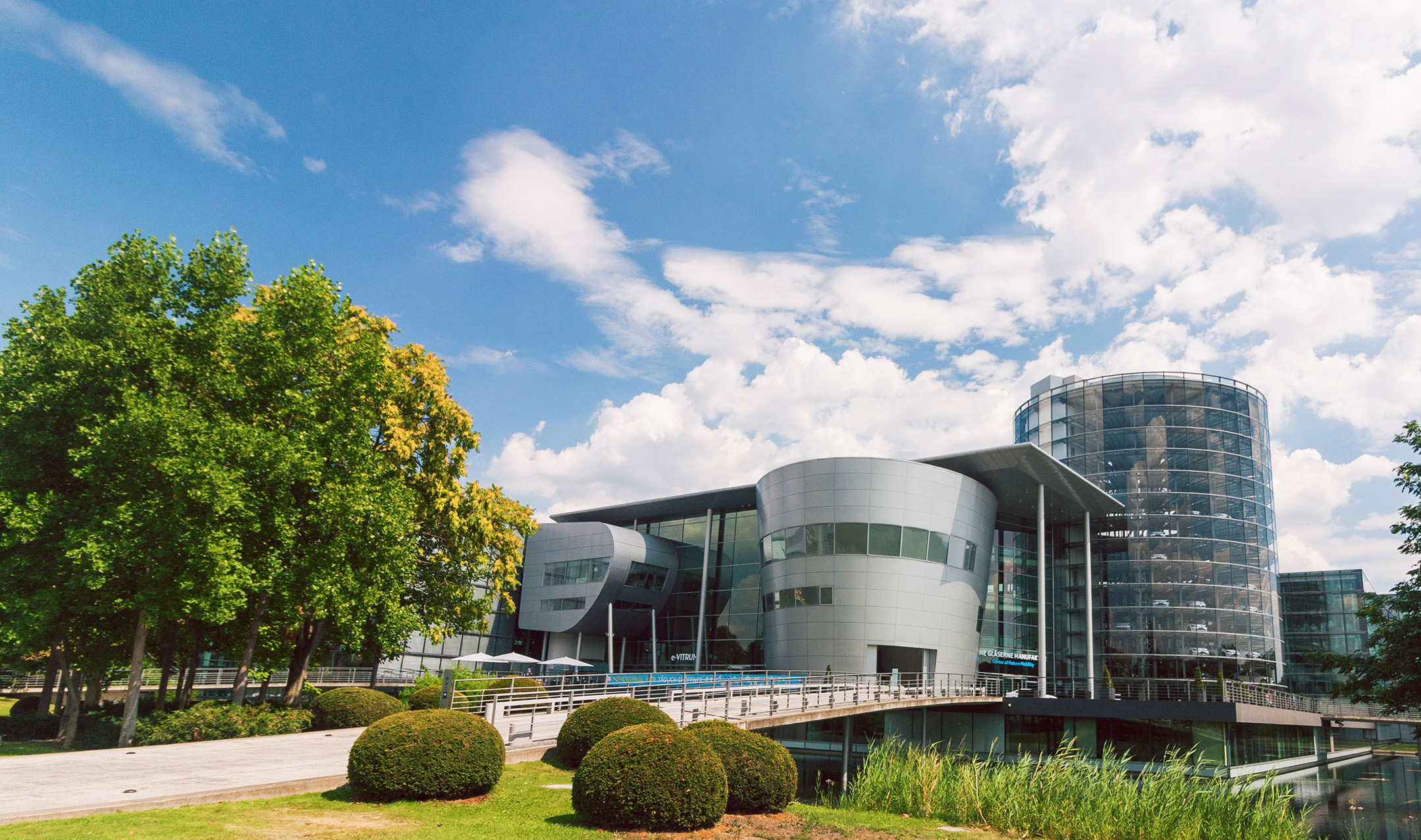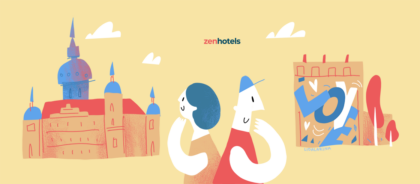Dresden Castle (Residenzschloss)
- Open hours: open daily except Tuesdays, from 10:00 AM to 6:00 PM.
- Cost: an all-inclusive ticket to the royal residency museums costs €12, but it’s free for children up to 17 years. The pass includes entry to : the Green Vault, the Cabinet of Prints, Drawings and Photographs, the Coin Cabinet, and the Armory in Dresden’s Royal Palace; the Porcelain Collection, the Royal Cabinet of Mathematical and Physical Instruments and the Old Masters Picture Gallery in the Semper Building at the Zwinger, as well as temporary exhibitions in the palace.
- How to get there: take tram No. 1, 2 or 4 to Dresden Postplatz or Dresden Altmarkt stop. A tram or bus ride costs €2.40 and the ticket is valid for one hour. You may change trams or buses as often as you like over that time.
- Website: skd.museum.
The castle was first erected in the 14th century as a fortress, but renovated in the 15th century into a palace building. The castle burned down in 1701 and restored by Augustus the Strong, Elector of Saxony.
The palace contained about 500 halls and rooms, but they all burned down again at the end of the Second World War. The next reconstruction of the palace began in 1985 as a museum complex for the Dresden State Art Collections.
The watch tower offers a panoramic view of the Old City.

The castle was first erected in the 14th century as a fortress, but renovated in the 15th century into a palace building. Photo: Mikhail Markovskiy / Shutterstock.com
Zwinger
- Open hours: open daily except Mondays, from 10:00 AM to 6:00 PM.
- Cost: a ticket to the Zwinger museum costs €12, but it’s free for children aged up to 17 years. For another €4.50 you can purchase a guided tour in the Picture Gallery, held every Saturday starting at 1:00 PM.
- How to get there: take tram #4 or #11 to Am Zwingerteich stop.
- Website: skd.museum.
Zwinger Palace is a beautiful palatial complex, designed in late baroque style by Matthäus Daniel Pöppelmann. Constructed at the beginning of the 18th century, as a place to host festivals that represent the city. The palace territory now includes a park with greenery and fountains.

A beautiful palatial complex, designed in late baroque style by Matthäus Daniel Pöppelmann. Photo: Marco / Unsplash
The following museums are currently open in Zwinger:
- Old Masters Picture Gallery, famous for having housed the Raphael’s Sistine Madonna for the last 250 years;
- The Cabinet of Mathematical and Physical Instruments, where you can learn the history of how precise mechanical instruments were developed starting all the way back in the 14th century;
- Porcelain Collection: this is the most extravagant collection of “white gold” in the world, a favorite of Augustus the Strong.
Altmarkt
- Open hours: open 24/7.
- Cost: Free
- How to get there: take tram #1, #2, or #4 to the eponymous stop.
- Website: striezelmarkt.dresden.de.
Altmarkt has been documented as far back as 1370. Here, the town would gather for festivals, markets, tournaments and games. In 1945, it was completely destroyed during WW2 but reconstructed in 1953 to form the east and west boundaries of communist Germany. Today, it is classified as a historical monument.

The Dresdner Striezelmarkt (Christmas Fair) is recorded to be the orgination of Stollen – Christmas Cake – which is enjoyed over this period worldwide.Photo: Masson / Shutterstock.com
Known for being the venue of the Dresdner Striezelmarkt (Christmas Fair) it is recorded to be the orgination of Stollen – Christmas Cake – which is enjoyed over this period worldwide. Today the Altmarkt hosts seasonal fairs and events. Its biggest annual event is the traditional Dresdner Striezelmarkt (Christmas fair), which will be hosted for the 589th time in 2023.
Transparent Factory (Gläserne Manufaktur)
- Open hours: Mondays to Saturday from 9:00 AM to 7:00 PM, on Sunday from 10:00 AM to 6:00 PM.
- Cost: a guided tour costs €7 and it’s free for children up to seven years old.
- How to get there: take tram #1, #2, #4, #10, #12, or #13 to Strassburger Platz/Gläserne Manufaktur stop.
- Website: glaesernemanufaktur.de.
Gläserne Manufaktur is a Volkswagen car factory. The plant’s glass building allows visitors to witness the entire production process. The best way to examine the factory’s operations is to take a guided tour.
The plant was launched in 2002 and produced the Phaeton model until 2016. It later switched to the e-Golf in 2017. 74 complete cars come off the conveyor belt on each weekday.

Photo: taranchic / Shutterstock.com
The Grand Garden of Dresden (Großer Garten)
- Open hours: the park is open 24/7. The park railway operates daily except for Mondays from April to the beginning of October from 10:00 AM to 6:00 PM. During summer from July to August, it is open daily except for Mondays. From October, it is open from 10:00am to 5:00pm
- Cost: free of charge. A railway trip costs €6 except for children up to two years old, for whom it’s free of charge.
- How to get there: take tram #1, #2, #4, #9, #10, #11, #12, or #13 or bus #61, #63, #75, or #85 to one of the following stops: Strassburger Platz, Comeniusplatz, Grosser Garten (Hygienemuseum), Lennéplatz, Querallee, or Tiergartenstrasse.
- Website: grosser-garten-dresden.de.
The Grand Garden of Dresden, or Großer Garten, is the largest and prettiest garden in Dresden.
The park was founded in 1676 and a palace was erected in 1683 in early baroque style. Today, Großer Garten features a park theatre, zoo, botanical garden, outdoor restaurants and bars, a pond for boat rides, children’s playgrounds, and flower beds.
Trains have traveled around the park since 1950. Four locomotives service the 5.6-km-long railway. A trip around the park takes half an hour and the stations are manned by volunteers.

Großer Garten features a park theatre, zoo, botanical garden, outdoor restaurants and bars, a pond for boat rides, children’s playgrounds, and flower beds. Photo: Mino Surkala / Shutterstock.com
German Hygiene Museum
- Open hours: open daily except Mondays, from 10:00 AM to 6:00 PM.
- Cost: €9, or €4.50 on Fridays after 3:00 PM, while for children up to 16 years old it’s always free of charge.
- How to get there: take tram #10 or #13 to Georg-Arnhold-Bad/Deutsches Hygiene-Museum stop or tram #1, #2, #4, or #12 to Deutsches Hygiene-Museum stop.
- Website: dhmd.de.
The German Hygiene Museum is a forum for science, culture and society. Founded by Karl August Lingner – the manufacturer of Odol mouthwash – it was launched as a venue for healthcare education, following the first hygiene exhibition in 1911.
It is renowned for the Transparent Man which is a life-sized replica of a man, that shows the inner workings of the human body, fabricated around a real human skeleton.
The exhibitions combine advanced technologies and realistic exhibits for instilling knowledge of the human anatomy, as well as tackling health and nutrition problems.

Photo: josefkubes/ Shutterstock.com
Brühl’s Terrace (Brühlsche Terrasse)
- Open hours: the embankment can be accessed 24/7. Dresden Castle operates from 10:00 AM to 6:00 PM every day from April to October, and daily from 10:00 AM to 5:00 PM from November to March.
- Cost: Free of charge.
- How to get there: take tram #3, #7, #8, or #9 to Dresden Synagogue stop.
Brühl’s Terrace is an embankment along the Elbe River in the Old City. It was built in the 16th century as part of Dresden’s fortifications. Heinrich von Brühl, an aesthete, gave an order in the 18th century to build a palace, theater, gallery, library and a belvedere for his distinguished guests. The terrace was opened to the public in 1814 and was dubbed the balcony of Europe.
At the turn of the 20th century, Brühl’s buildings were replaced by modern ones, which were destroyed during the Second World War but subsequently rebuilt.
After finishing your walk down the embankment, you can descend into the underground corridors of Dresden Castle. In the evenings, soak in the view of the terrace from Carola Bridge (Carolabrücke).

After finishing your walk down the embankment, you can descend into the underground corridors of Dresden Castle. Photo: Felix Mittermeier / Unsplash
Dresden Panometer
- Open hours: open on weekdays from 10:00 AM to 5:00 PM. Open weekends and public holidays until 6:00 PM.
- Cost: adult tickets run €11.50, it’s €6 for a kid’s ticket between the ages of 6 to 16. Free for children under 6 years old.
- How to get there: Take bus #64 to Nätherstraße stop, which is right across from the museum.
- Website: panometer.de.
Take a trip to the past at the Dresden Panometer. The Panometer is located in the building of a former gasometer – which is a building that used to store natural gas. This circular building displays two panoramic paintings by Yadegar Asisi that depicts the aftermath of Dresden following the bombings of the Second World War in 1945.

Photo: Dziajda / Shutterstock.com
Dresden Suspension Railway (Schwebebahn Dresden)
- Open hours: open daily from 10:00 AM to 6:00 PM.
- Cost: €5 for a trip there and back.
- How to get there: take bus #61, #63, #84, or #309 to Dresden Körnerplatz stop.
- Website: dvb.de.
The suspension railway has connected the Loschwitz and Oberloschwitz districts of Dresden since 1901. Following a reconstruction in 2001-2002, the upper station was equipped with a modern panoramic elevator that carries visitors to the equipment room with an exhibition and the Schönes Aussicht (“Beautiful View”) observation deck.
This pilotless cabin lifts tourists up to a height of 84 meters and follows a 274 meters route. The whole trip takes approximately 4½ minutes.

This pilotless cabin lifts tourists up to a height of 84 meters. Photo: 13threephotography / Shutterstock.com
Dresden Kunsthofpassage (Kunsthof Passage)
- Open hours: open 24/7, visit the website for specific hours of the attractions there.
- Cost: free of charge.
- How to get there: 5-minute walk from the Görlitzer Straße stop of tram #13.
- Website: kunsthof-dresden.de.
20 years ago, artists revived the rundown courtyards of Neustadt between Görlitzer Str and Alaunstraße. The result was five courtyards, all decorated in different styles with the: Courtyard of the Elements, Courtyard of Mythical Creatures, Courtyard of Light, Courtyard of Metamorphoses, and Courtyard of Animals.

A number of cafés, restaurants, galleries, and shops are scattered all over the territory of these creative courtyards. Photo: Tupungato / Shutterstock.com
Mounted on the walls of the popular Courtyard of the Elements buildings are some unusually shaped drainpipes which were inspired by the drainpipes of St. Petersburg, Russia.
A number of cafés, restaurants, galleries, and shops are scattered all over the territory of these creative courtyards.
Almost entirely destroyed during the Second World War, by 2004, Dresden had restored its historical silhouette and rightfully became one of the top 10 most popular cities for tourism in Germany.
Today it draws tourists in droves with its rich collection of works of art and modern art districts. Whether you’re a history buff or simply love Baroque era architecture, it’s time to arrange a trip to Dresden, Germany.





